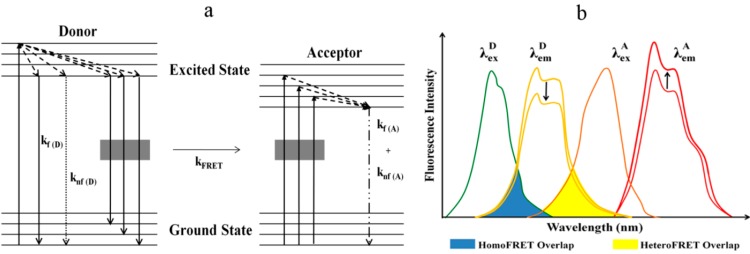Figure 1.
(a) The figure shows the Jablonski diagram demonstrating mechanism of Förster Resonance Energy Transfer (FRET). On absorption of energy, electrons in both donor and acceptor are excited from the ground state to an excited state, and they lose energy as fluorescence with rate constant kf(D) for donor or kf(A) for acceptor and non-fluorescence mechanisms with rate constant knf(D) for donor or knf(A) for acceptor. On the occurrence of FRET, excited energy of the donor is also lost via FRET to an acceptor with rate constant kFRET; and (b) Spectral overlap: The absolute requirement of FRET is illustrated in this figure. The symbols “” and “” or “” and “” indicate excitation (λex) and emission spectra (λem) of donor and acceptor fluorophores respectively with upper index letters denoting fluorophores. Essential spectral overlap in the case of heteroFRET (yellow) and homoFRET (blue) is also highlighted in the figure.

